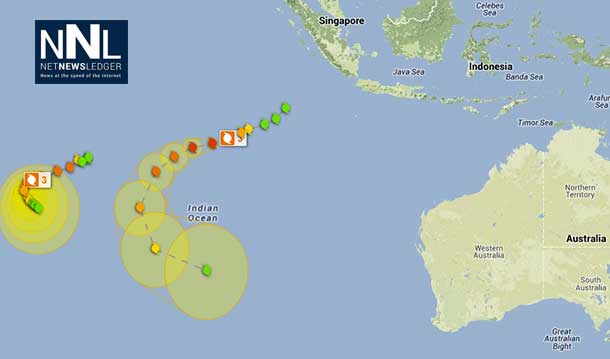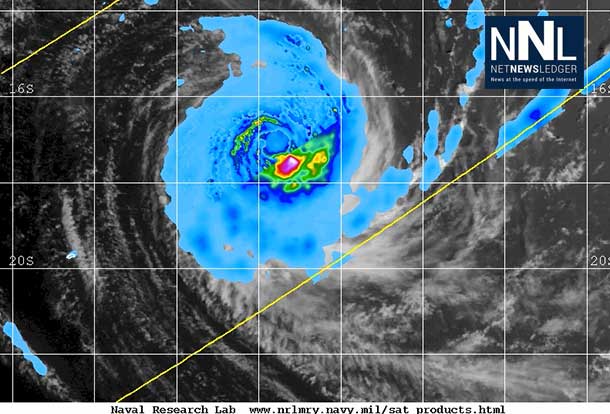Tropical Cyclone Amara
Weather News –December 20 2013 – NASA’s TRMM satellite saw heavy rainfall was happening in Tropical Cyclone Amara on December 16, and still occurring on December 19, although it moved from east to southeast. Warnings are already in effect for Mauritius’ Rodrigues Island.
Tracking Map for Cyclone Amara

NASA’s Tropical Rainfall Measuring Mission or TRMM satellite can measure rainfall rates from space, and that’s what it has been doing over Tropical Cyclone Amara since it was born. On Dec. 16, at 2043 UTC/3:43 p.m. EST TRMM data showed scattered bands of moderate to heavy rain falling at a rate of over 76.9 mm/3 inches per hour spiralling into Amara’s center. Cloud tops reached 13 km/8 miles high near the center and eastern side.
On Dec. 19 at 0441 UTC, the Naval Research Laboratory in Washington, D.C. combined TRMM satellite rainfall data with a visible image of Amara’s clouds from Japan’s METEO-7 satellite to provide a complete picture of the storm. The image revealed that the heaviest rain was falling southeast of the center at 1.6 inches/40 mm per hour.
Rainfall Map of Cyclone Amara

By 0900 UTC/4 a.m. EST, Tropical Cyclone Amara’s maximum sustained winds were near 105 knots/120.8 mph/194.5 kph, making it hurricane-strength. Amara was still about 740 nautical miles east-northeast of La Reunion Island, centered near 17.2 south latitude and 68.3 east longitude.
Amara does, however, threaten Rodrigues Island. The Mauritius Meteorological Service or MMS has already put a cyclone class 2 warning in effect for Rodrigues Island. The island is part of the Republic of Mauritius and is located about 350 miles/560 kilometers east of Mauritius.
Amara was moving to the west-southwest at 9 knots and over the next several days is expected to take a more southern route. Occasional showers from Tropical Cyclone Amara are likely on Dec. 20 at night (local time) and will become more frequent, according to the MMS. MMS warns that sustained winds can be expected between 18.6 to 24.8 mph / 30 to 40 kph with gusts to 68.3 mph/75 kph. Amara is also expected to generate rough seas and ocean swells. Maximum significant wave heights can reach 9.1 meters/30 feet.
Amara was moving to the west-southwestward at 9 knots/10.3 mph/16.6 kph. The Joint Typhoon Warning Center expects Amara to continue moving slowly west-southwestward while it remains in a weak steering environment, moving between two deep layer subtropical ridges (elongated areas of high pressure).






